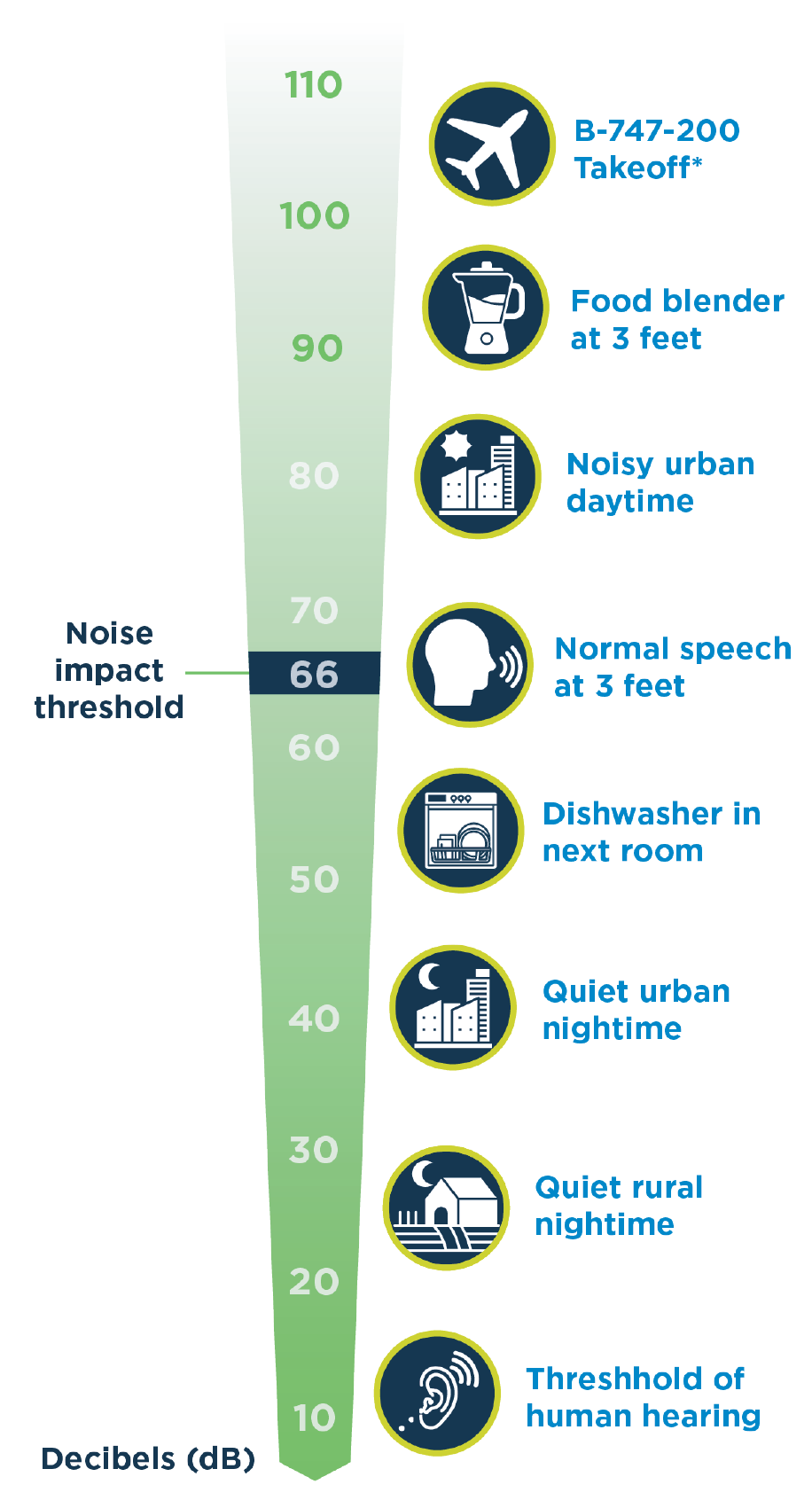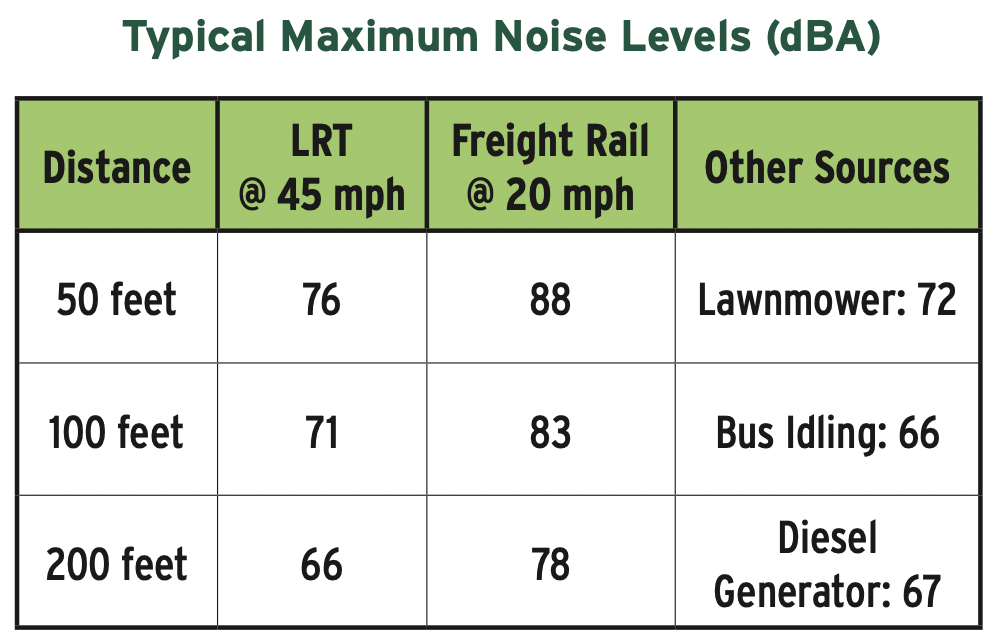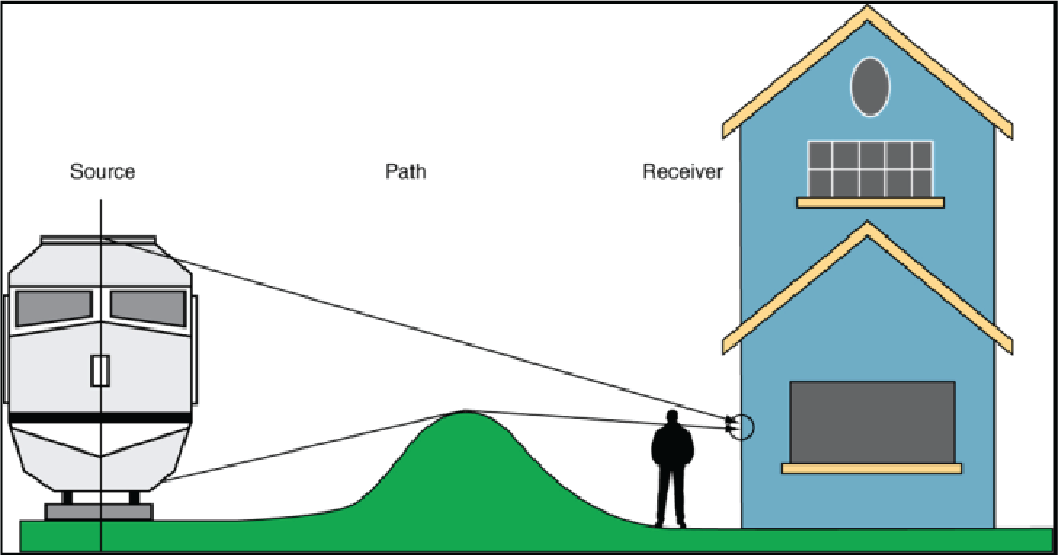How is Noise Defined?
(Information from Federal Transit Administration)
Level: Sound level is expressed in decibels (dB). Typical sounds fall between 0 and 120 dB. A 3dB change in sound level represents a barely noticeable change outdoors; a 10 dB change is perceived as a doubling (or halving) of the sound level.
Frequency: The tone or pitch of a sound is expressed in Hertz (Hz). Human ears can detect a wide range of frequencies from about 20 Hz to 20,000 Hz. However, human hearing is not effective at high and low frequencies; we use a measure called an A-weighted level (dBA) to correlate with human response.
Time Pattern: Because environmental noise changes all the time, it is common to condense all of this information into a single number, called the “equivalent” sound level. It represents the changing sound level over a period of time.
For light rail transit (LRT) and freight rail projects, the Day-Night Sound Level (Ldn) is the common noise descriptor adopted by most agencies as the best
way to describe how people respond to noise in their environment.
The Ldn is a 24-hour cumulative noise level that includes all noises that happen within a day, with a penalty for nighttime noise (10 PM to 7 AM). This nighttime penalty means that any noise events at night are equal to ten events during the daytime.

Noise levels (in Ldn) from LRT and freight rail depend on the type of vehicle, how loud each individual vehicle could be (see table below), the number of trains per day, and train length and speed. In addition, noise levels decrease with increasing distance from the tracks.
Noise impact from LRT and freight rail projects are assessed by comparing the existing (ambient) noise with the noise predicted to be generated by the project.
The Federal Transit Administration’s (FTA) noise criteria take into account the noise sensitivity of the receiver by land use category, including:
Category 1: Highly noise sensitive, such as recording studios
Category 2: Residences and other places where people sleep
Category 3: Schools, churches and other places with daytime use
A noise assessment is broken down into three pieces:
Source: What is generating the noise (such as an LRT vehicle or freight train)?
Path: How far and over what type of ground does the noise travel?
Receiver: Who or what is experiencing the noise, such as a residence or a school?

Noise impact assessments are based on applicable FTA and Federal Railroad Administration (FRA) models, and are assessed using the source-path- receiver framework. Some of the key components of a noise impact assessment include:
Source
Noise levels of transit and freight trains Number, length, and speed of LRT and freight trains
Path
Receiver
Noise impact assessments also address the potential for impacts from maintenance facilities and stations.

Assessment
The output of a noise impact assessment includes locations with Severe Impact (yellow) and Moderate Impact (orange). This information is used to determine the location and extent of any potential noise mitigation.
How is Noise Mitigated?
Noise mitigation is applied at locations where impact is identified. Severe impacts generally require noise mitigation. At the moderate impact level, noise mitigation is also addressed. Mitigation can be applied at the source of the noise, along the path, or at the receiver. Examples of typical LRT and freight rail noise mitigation include:
Typical Mitigation Measures
Mitigation measures can be applied to the source, the path and/or the receiver:

Friendly Streets
The City of St. Louis is committed to making our streets, sidewalks, and surrounding transportation infrastructure safe, convenient and enjoyable for everyone, whether they drive a car, walk, ride a bike, take public transit or use a mobility aid.
See the Friendly Streets page on the City of St. Louis website below: